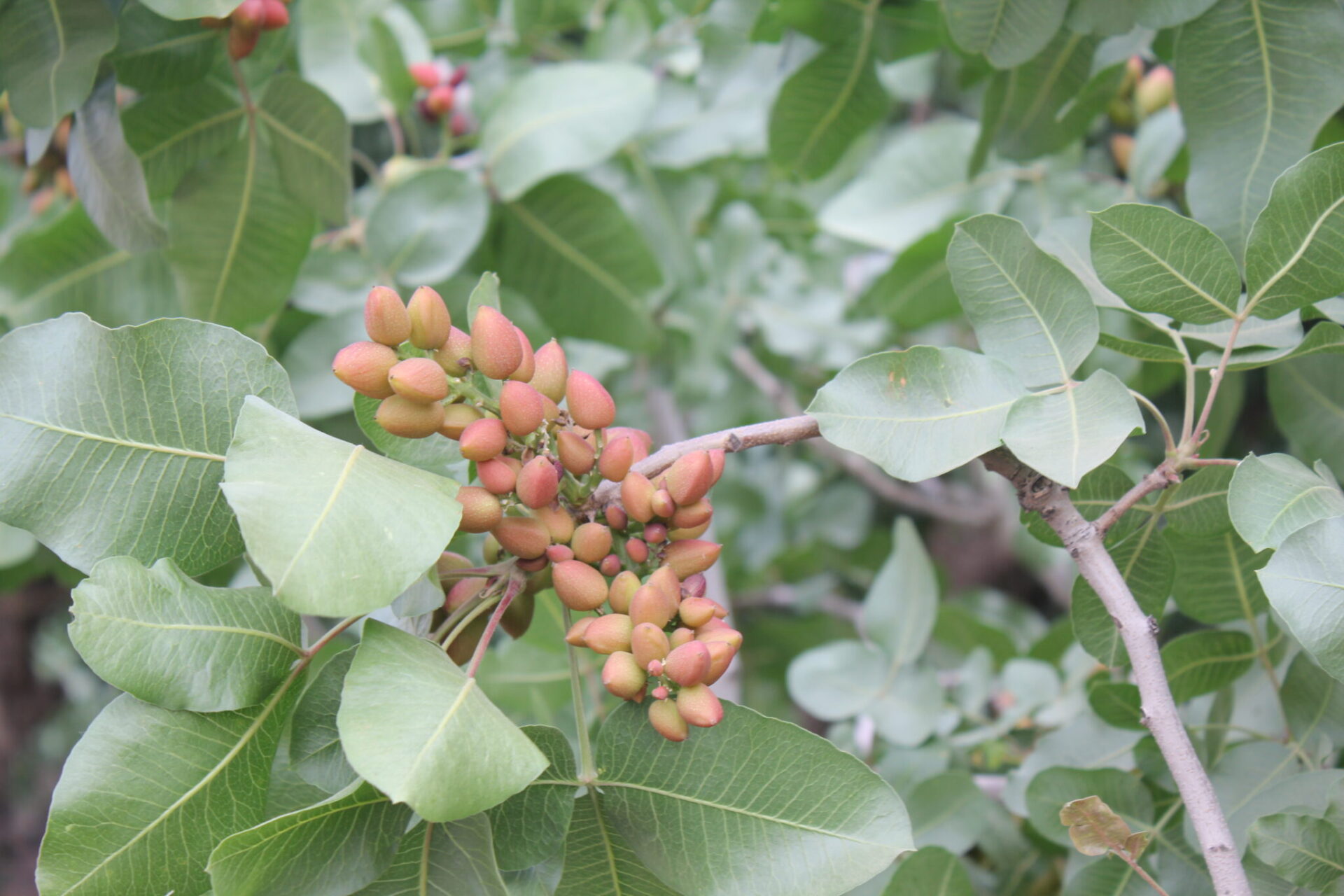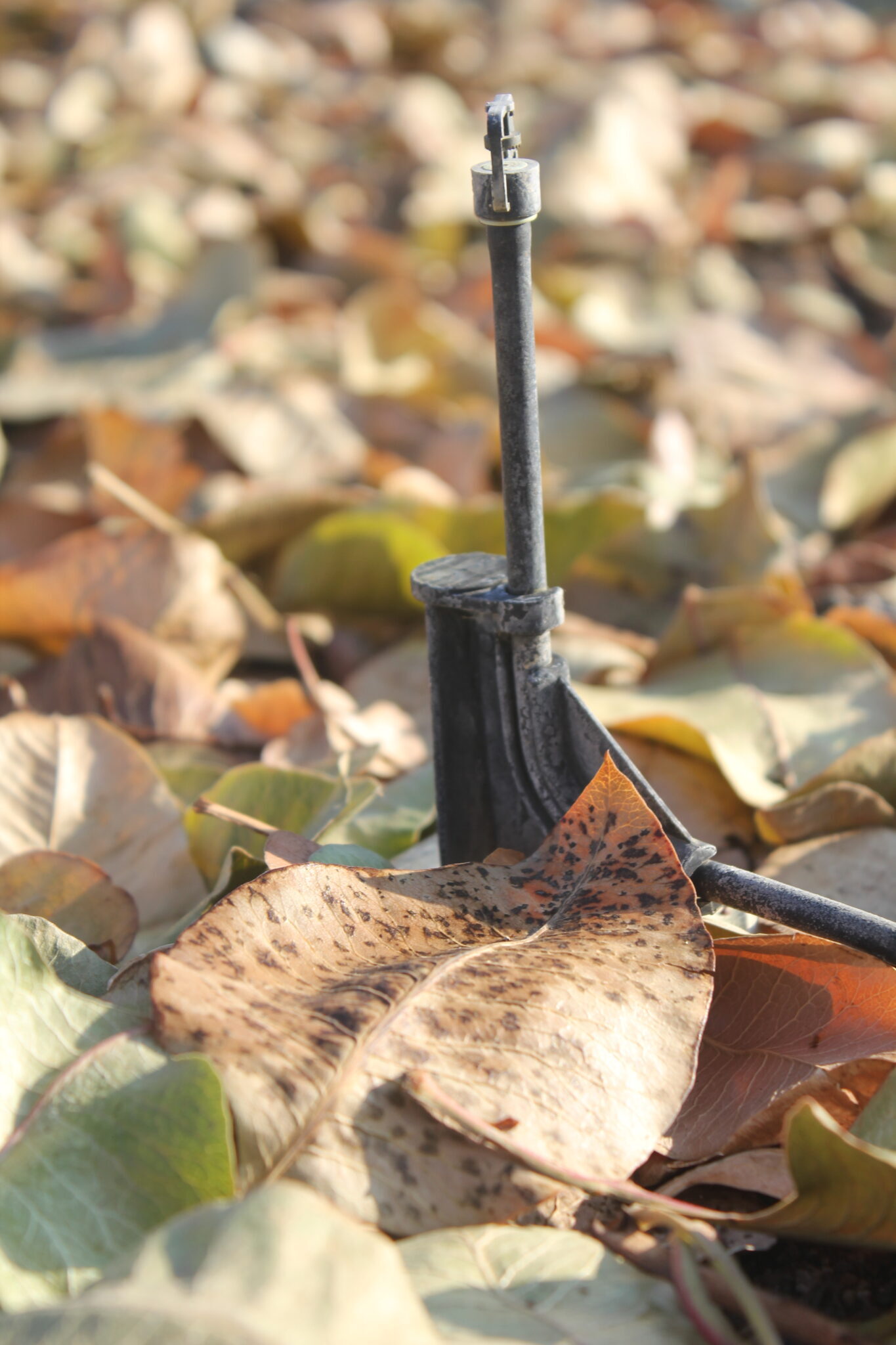
The heat of the summer has settled in and drought- and heat-tolerant pistachio trees are doing what they do best: using available water and nutrients to grow a crop.
The summer months are a critical time for nut development, and they are also the time of year when water and nutrient demand by trees is high. Insect pest pressure mounts early in the summer. Insect feeding on the developing nuts causes damage and can lead to rejections at the processor if damage percentages are high. Paying attention to tree needs and pest levels in the summer can help with achieving what every pistachio grower wants to see: a 5,000-pound crop and early harvest.
With all of these activities in mind, here are five orchard scenarios that can contribute to a more profitable harvest in the fall.
1. Distribution Uniformity in Your Irrigation System
A well-designed and maintained irrigation system can have a big impact on tree health and crop quality. Uneven irrigations increase production costs and impact tree vigor. A system that delivers uniform amounts of water to all areas of an orchard will help prevent a number of tree health and crop quality issues.
Clogging and leaks will contribute to poor distribution uniformity. Routine maintenance of the system should be a priority.
University of California recommends a process where growers can measure the distribution uniformity in an orchard. This process involves testing locations along the main and lateral lines throughout the system. Using a graduated cylinder and a stop watch, the application rate of multiple drip emitters or sprinklers, both near the water source and at the ends of lines, can be measured. A pressure gauge with a pitot tube can be used to see uniformity of the pressures across the field, making sure they are within the recommended operating requirements of the emitters.

2. No Early Splits
Early splits are abnormal pistachio nuts where both the hull and shell are open early in the nut developmental stage, exposing the kernel to damage by insects and molds. Presence of molds that produce aflatoxins and navel orangeworm (NOW)-infested nuts will cause rejection by the processor and lower returns for growers. It is important that contaminated nuts be removed during processing. Early splits with shriveled hulls have been shown to have more NOW damage and mold compared with early splits with smooth hulls. Shriveling is a sign that allows identification of nuts most likely to be contaminated.
Reduction of NOW in an orchard should reduce aflatoxin levels in harvested nuts.
In his presentation at the 2020 Pistachio Day, UC Davis plant pathologist Themis Michailides said if growers can minimize early splits to reduce damage from NOW, they may also limit aflatoxin contamination in their pistachio crop.
Rootstock choices and irrigation management are two steps listed by Michailides to reduce early splits. His research shows that trees on UCB1 rootstock are the least prone to early splits, followed by PG1 rootstock.
His research also has shown it is critical to irrigate at the shell development stage. Water stress caused by skipping an irrigation in early May significantly increases the percentage of early splits found at harvest.
3. Low Pest Pressure
NOW and Gill’s mealybug are two primary pests of pistachios, but large bugs can also cause damage early in the season.
Feeding by stink bugs and leaffooted bugs can cause crop damage. They use their mouthparts to pierce leaves and nuts to feed on plant juices. Removal of overwintering sites can help keep population levels down.
Use of sticky bottom wing traps baited with ground pistachio mummies can be used to determine if mated female NOW are present in an orchard. High numbers of females in these traps indicate a high infestation rate in the crop and the possibility of aflatoxin contamination.
Absence of sticky nut clusters caused by mealybug feeding means that this pest did not successfully overwinter or spray applications knocked down populations. The overwintering generation produces the first generation of crawlers by early June, which is the most effective time for insecticide treatment.
4. Even Nut Maturity
An orchard survey in the summer should show trees bearing a crop in the same stage of development. By harvest time, nearly all nuts will be mature and harvest shakes will be efficient. That does not happen when nuts are developing in different stages.
Lack of sufficient hours below 45 degrees F from November through February affects the nut crop that develops in the spring. Delayed or strung-out bloom is one of the signs that the tree did not experience adequate winter rest. Trees respond with abnormal blooms.
That translates into a crop that matures unevenly and presents a problem at harvest.
Trees can have nuts that ready for harvest as well as nuts that don’t shake off due to immaturity.
Growers and crop advisors can calculate the amount of chill their orchards receive and use that information as a management tool. A late dormant oil spray is a management strategy for low chill years, but effects of the oils are not fully understood and their performance has been erratic.
5. A Heavy Crop
A 5,000-pound crop and early harvest are welcomed by all pistachio growers, but the management necessary to facilitate that scenario isn’t always done.
Pistachio trees are adapted for survival, but for economic production, management including irrigation, nutrition and weed and pest control is important.
According to the UCCE Pistachio Production Manual, pistachio trees display three physiological conditions. The first is alternate bearing, an annual fluctuation of large crops with smaller crops. The second is the production of blank, or unfilled nuts. The third is non-split nuts, or nuts that fail to split along the lateral nut suture. All three conditions appear to be related to crop load and are possibly linked to carbohydrate competition. These conditions can have a significant impact on nut production.
“Quality, harvestable yield—how much net return per square foot of orchard floor—should drive canopy management,” said Louise Ferguson, UC Davis Department of Plant Sciences and a long-time researcher in pistachio production.
Mechanical pruning trials conducted from 2012 to 2017 showed this practice can mitigate alternate bearing in trees on Atlantica rootstock by topping and hedging before the low crop year.
Blank nuts result when there is fruit set, but the embryo fails to grow and the shell is empty. Blanking can be caused by crop load and production practices.
Blanking is more sensitive to insufficient irrigation than is splitting. The Production Manual recommends maintaining boron leaf levels above 120 ppm and providing sufficient water to avoid water stress during the season.
Shell splitting is dependent upon kernel growth and development within the shell. Splitting begins about the end of July and continues through mid September. Crop load and irrigation management can both affect percentage of split nuts.















